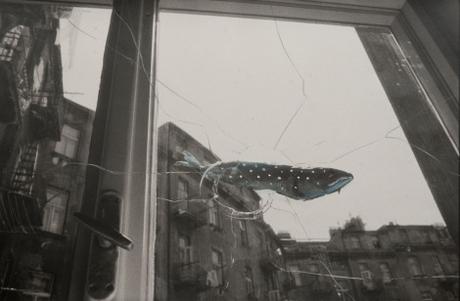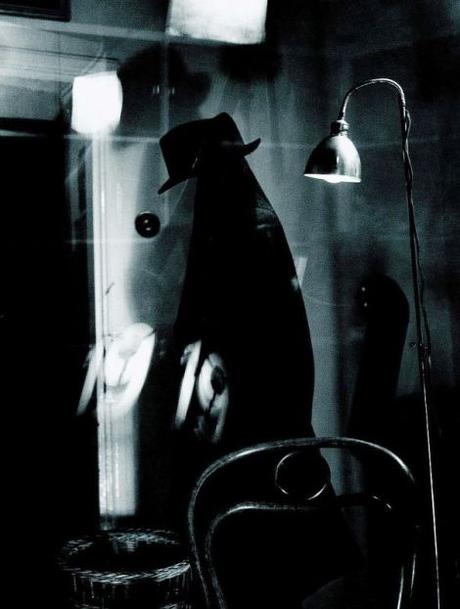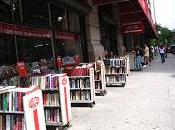di Paola Paleari

Se lo scrittore Franz Kafka è universalmente riconosciuto come uno dei massimi riferimenti della letteratura ceca - e, più in generale, della sua cultura - della prima metà del Novecento, lo stesso può essere detto a proposito del romanziere Milan Kundera relativamente al periodo che ha inizio con la celebre Primavera di Praga e si estende fino ai giorni nostri. Nonostante quest'ultimo viva in esilio dal 1975 e "si reputi uno scrittore francese" (i), esiste una stretta connessione tra i due autori e l'influenza esercitata da Kafka fu riconosciuta dallo stesso Kundera (ii).
L'angoscia, l'ansietà e il timore dell'individuo verso il mondo esterno e interiore, il terrore per un universo assurdamente burocratizzato, il senso di solitudine e inadeguatezza sono alcuni dei temi caratteristici della poetica kafkiana, che originarono dalle specifiche condizioni socio-politiche del suo contesto storico e che lasciarono una traccia indelebile nel modo in cui i suoi compatrioti da allora guardano all'esistenza. Insieme a Kundera, molti autori Cecoslovacchi portarono queste considerazioni nel loro lavoro e le reinterpretarono all'interno di varie pratiche artistiche, intessendo tra l'epoca modernista e post-moderna un fil rouge che ha dato forma a una coerenza unica in termini di orientamenti concettuali e modalità espressive.
Riferendoci più precisamente alla fotografia, alcuni percorsi fondamentali possono essere individuati e ritrovati lungo tutto il corso del secolo passato, specialmente nei lavori degli artisti delle avanguardie e nelle più recenti ricerche degli anni '90. Uno di questi tratti è il valore del vuoto e dell'assenza, che ha portato all'affermazione di una forte tendenza verso l'astrazione. L'eredità lasciata da Jaromír Funke - che negli anni '20 fu pionieristico nel suo tentativo di rappresentare l'"essenza della visione" utilizzando le forme geometriche elementari come fossero le basi costruttive dell'universo - è senza dubbio il punto di partenza delle composizioni concettuali di Štěpán Grygar e Jiri Sigut, nelle quali la struttura del materiale e i processi luminosi sono analizzati tramite un approccio sperimentale minimalistico.
Accanto alla freddezza delle ombre e delle forme, un altro elemento predominante che corre parallelo come un fiume sotterraneo è la presenza del corpo umano e della sua intrinseca carica erotica. Un'ossessione e una gabbia per Kafka, che ne Le Metamorfosi (1915) riversò la rabbia interiore per la propria debolezza fisica in immagini alienanti del corpo maschile, mentre Kundera "si specializzò in un tipo di erotismo emotivamente distante, spesso farsesco" (iii) che raggiunse il suo massimo picco ne Il libro del riso e dell'oblio (1979). Il corpo è un protagonista assoluto e controverso nella fotografia ceca fin dalla comparsa dei movimenti di avanguardia: negli anni '20, i nudi perfetti di František Drtikol furono considerati troppo arditi per il loro tempo, mostrando il corpo svestito nel suo stato originale e nella sua bellezza naturale; i ritratti rubati di soggetti femminili degli anni '60 costarono a Miroslav Tichý la nomina di dissidente da parte del governo; mentre più recentemente le scene sovraccariche e spesso grottesche di Jan Saudek furono accusate di diffondere la pornografia.
In realtà, l'ironia è una componente importante di questo gioco, così come una caratteristica imprescindibile di molti autori cechi, accomunati dalla tendenza a canzonare gli stereotipi e i cliché. Sebbene spesso oscura ed enigmatica, l'anima ceca è anche sarcastica e giocosa, avendo sviluppato l'umorismo come riposta a un sistema burocratico ingombrante che era solito elogiare la conformità alle regole a discapito dell'individualità e del libero pensiero. L'esempio di Václav Chocola in questo senso è paradigmatico: fotoreporter di una cera fama già ai suoi tempi, fu arrestato dal regime comunista e condannato a un mese di prigione per aver documentato I funerali di Jan Palach nel 1968, ma continuò comunque a lavorare e produrre immagini indimenticabili, inclusi alcuni dei ritratti più gioviali di Salvador Dalì. In condizioni molto diverse, ma adottando un simile approccio verso la stravaganza della vita, il fotografo slovacco Peter Župník - un membro della cosiddetta generazione "New Wave" degli anni '80 - svela la poesia nascosta nel mondo giocando con il lato inaspettato e bizzarro della quotidianità.
Anche se nel momento attuale stiamo vivendo un crescente appiattimento della cultura visiva dovuto all'iperproduzione di immagini, sembra che lo spirito fotografico ceco tenti di sopravvivere, come se fosse guidato dal concetto dell'"eterno ritorno" descritto da Kundera ne L'insostenibile leggerezza dell'essere (1984), secondo il quale, in un universo senza fine, tutto è destinato a ricorrere incessantemente. Sicuramente questa prospettiva riveste di un manto quasi idealistico il fare creativo e il ruolo dell'artista, il quale è posto nella posizione di assumersi la responsabilità del passato sulle sue spalle, e allo stesso tempo è chiamato ad arrendersi al volere del fato. Seguendo questa visione, possiamo applicare alla fotografia ciò che Jan Skácel - uno dei maggiori autori di origine moldava - scrisse nel 1966 a proposito della poesia: I poeti non inventano la poesia / La poesia è in qualche posto là dietro / E' là da moltissimo tempo / Il poeta non fa che scoprirla.
(i) Milan Kundera skips hometown conference on his work, CBC News, 30 May 2009
(ii) Cfr. Milan Kundera, L'arte del romanzo, Adelphi, Milano, 1988 (12esima edizione)
(iii) Harold Bloom, Aaron Tillman, Milan Kundera (Bloom's Modern Critical Views), Chelsea House Publications, New York, 2003
-----------------------
The eternal return. Recurrent patterns in Czech photography of the Twentieth centuryBy Paola Paleari

If the writer Franz Kafka is universally recognized as one of the major references in Czech literature - and culture in general - of the first half of the Twentieth century, the same can be said about novelist Milan Kundera relative to the period that starts with the famous Prague Spring and stretches to our days. Despite the fact the latter has lived in exile since 1975 and "sees himself as a French writer" (i), there is a close connection between these two authors and the influence played by Kafka was acknowledged by Kundera himself (ii).
The individual's anguish, anxiety and fears towards both the outer and inner world, the terror of an absurd bureaucratized universe, the sense of loneliness and inappropriateness are some of Kakfaesque characteristic themes that arose from the specific socio-political conditions of his times and left a permanent mark on the way his compatriots have been looking at existence from then on. Together with Kundera, many postwar Czechoslovakian authors brought these considerations into their works and reinterpreted them through various artistic practices, sewing a fil rouge between the Modernist and Post-Modern ages that has given shape to a unique coherence in terms of conceptual frames and expressive modes.
Referring more precisely to photography, some fundamental patterns can be distinguished and found throughout the course of the last century, especially in the works of the avant-garde artists and in the more recent photographic researches from the '90s. One of these traits is the significance of void and absence, which led to the establishment of a strong trend towards abstraction. The heredity left by Jaromír Funke - who in the '20 was a pioneer in his attempt of representing the "essence of vision", using elementary geometric forms as they were the basic building-blocks of the universe - is undoubtedly the starting point of Štěpán Grygar and Jiri Sigut's conceptual compositions, where the structure of the material and the light processes are analyzed through a minimalistic experimental approach.
Alongside the coldness of shadows and shapes, another predominant element that runs parallel like an underground stream is the presence of human body and its intrinsic erotic power. It was an obsession and a cage for Kafka, who in The Metamorphosis (1915) turned the internal rage at his own physical weakness into alienating images of the male body, while Kundera "specialized in that brand of emotionally distanced, often farcical eroticism" (iii) that reached its highest point in The book of laughter and forgetting (1979). The body is an absolute and controversial protagonist in Czech photography since the appearance of the avant-garde movements: in the '20s, František
Drtikol's elegant nudes were considered extremely daring for their time, showing the naked body in its original state and natural beauty; Miroslav Tichý's stolen portraits of women from the '60s caused him to be labelled as a dissident by the government; while more recently Jan Saudek's rich and often grotesque scenes were accused of spreading pornography.
In fact, irony is an important component of this game, as well as an inescapable characteristic of many Czech authors, associated by the tendency to mock stereotypes and clichés. Although often obscure and enigmatic, Czech soul is also sarcastic and playful, having developed humour in response to a cumbersome bureaucratic system that used to praise conformity and rules above individuality and free-thinking. Václav Chocola's example is paradigmatic in this sense: a photoreporter of some reputation already in his days, he was arrested by the communist regime and spent one month in prison for his documentation of Jan Palach's funeral in 1968, but he kept on working and producing unforgettable images, including some of the most jovial Salvador Dalì's portraits. Under very different conditions but adopting a similar approach towards the weirdness of life, Slovak photographer Peter Župník - a member of the 1980s so called "New Wave" generation - unveils the poetry hidden in our world by playing with the unexpected and bizarre side of everyday situations.
Even if in the present days we are facing an increasing flattening of visual culture due to the hyper-production of images, it seems like Czech photographic spirit tries to survive, as if it was driven by the concept of the "eternal return" described by Kundera in The unbearable lightness of being (1984), upon which, in an infinite universe, everything is guaranteed to recur endlessly. This perspective surely casts an almost idealistic shade on creative production and on the role of the artist, which is put in the position of assuming the responsibility of the past on his or her shoulders, and at the same time is asked to surrender to the will of fate. Following this vision, we can apply to photography what Jan Skácel - a major author of Moravian origin - wrote in 1966 about poetry: Poets don't invent poems / The poem is somewhere behind / It's been there for a long long time / The poet merely discovers it.
(i) Milan Kundera skips hometown conference on his work, CBC News, 30 May 2009
(ii) Cfr. Milan Kundera, The Art of the Novel, Grove Press, New York, 1988
(iii) Harold Bloom, Aaron Tillman, Milan Kundera (Bloom's Modern Critical Views), Chelsea House Publications, New York, 2003




![[Cibovagando] Marta Bibendum](https://m21.paperblog.com/i/289/2898500/cibovagando-marta-bibendum-L-vFbziq-175x130.jpeg)

